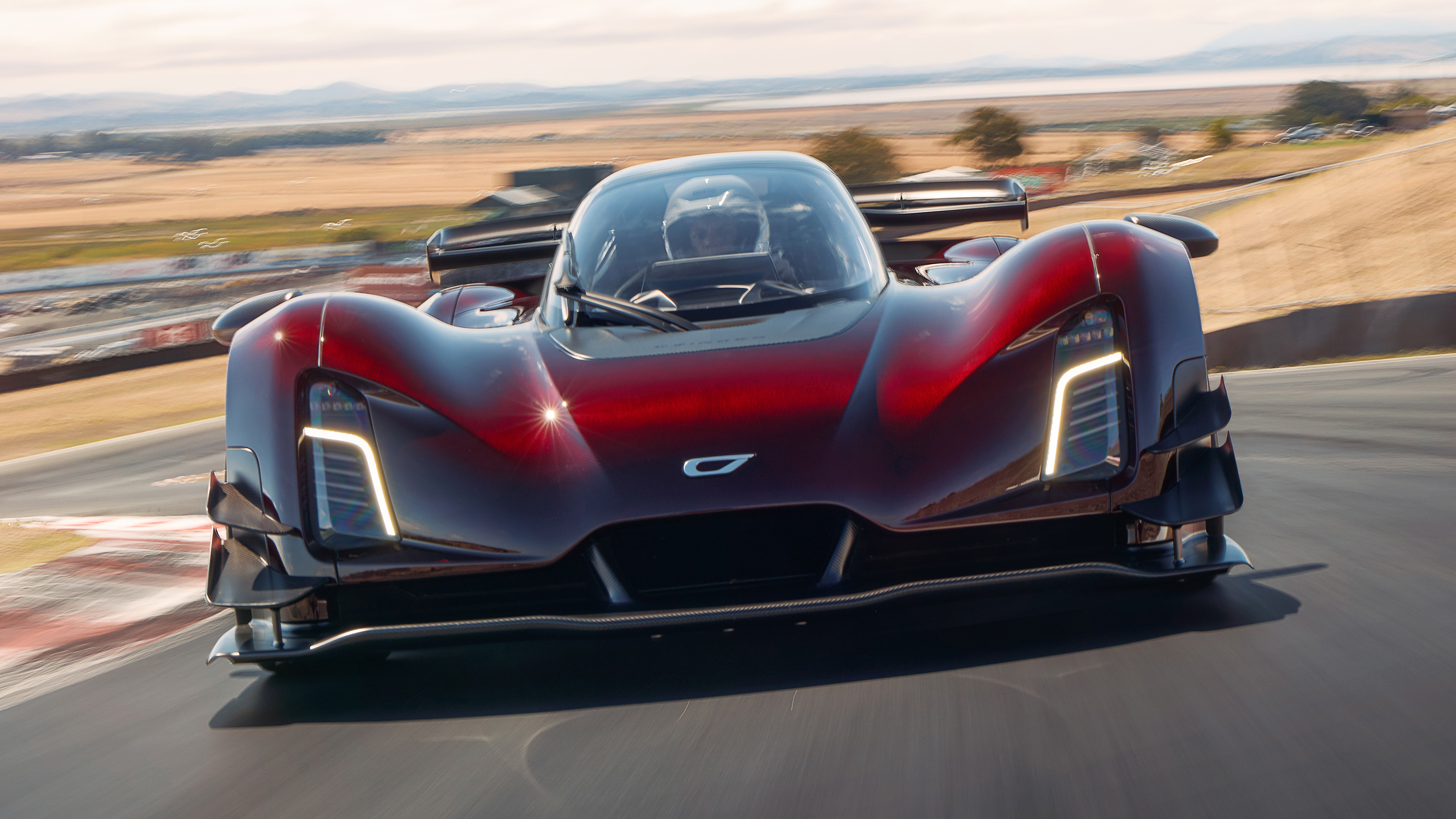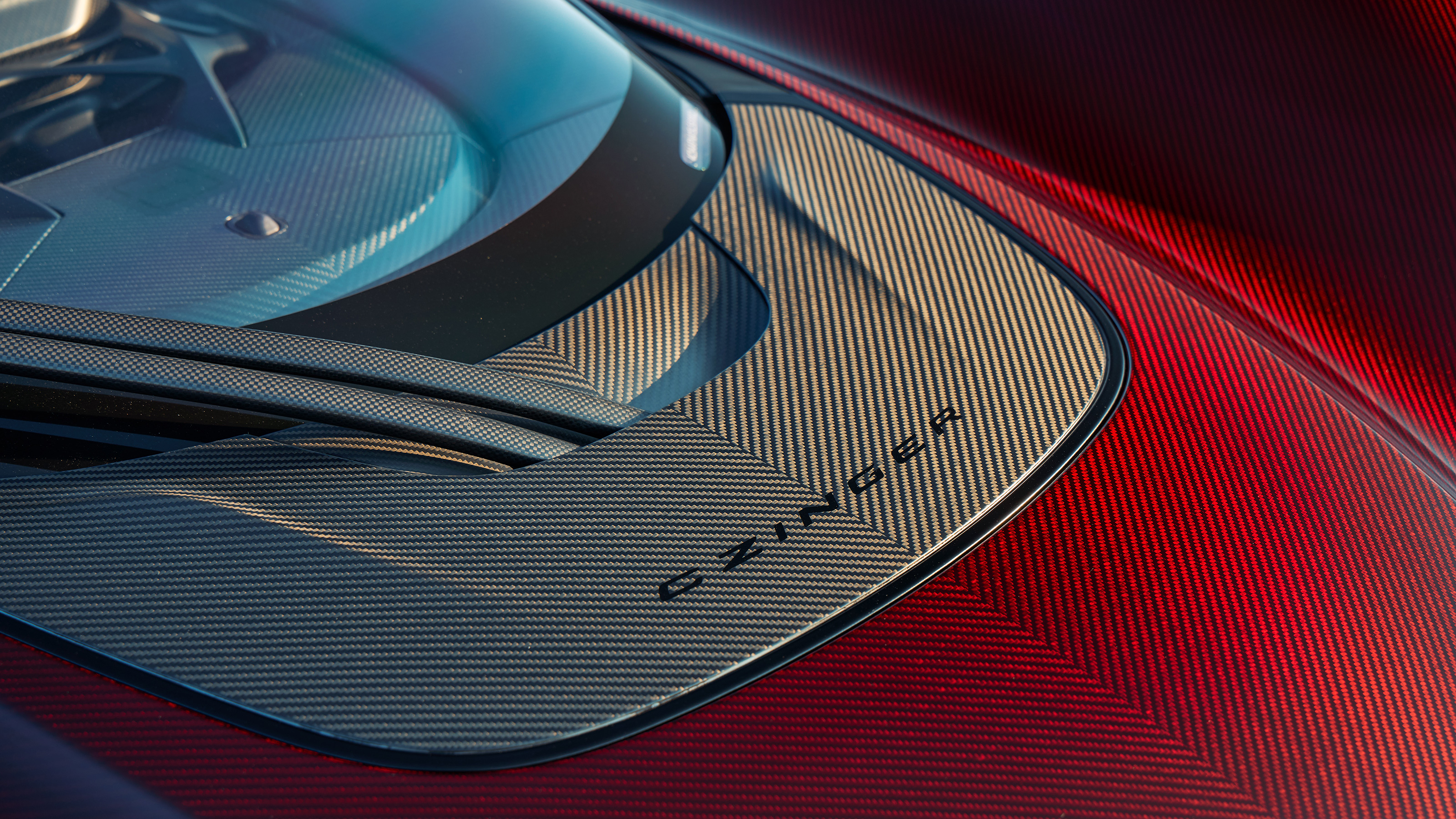
Czinger 21C review: flat out in America’s £1.6m, 3D-printed hypercar
What’s this?
Hopefully finished this time. Top Gear drove a very early prototype of the Czinger 21C a few years ago, but this is it. The real deal. The Californian-born tandem-seat hybrid hypercar with 1,250bhp, Rimac-level performance and engineering solutions straight out of Stark Industries.
What sort of tech are we talking?
A closed loop, AI-driven approach that eliminates expensive tooling costs, allows rapid iteration and creates perfectly optimised, lightweight components through 3D printing. Over the past five years I’ve visited several times and watched this bold project turn from sci-fi into reality.
In 2024, sister company Divergent’s facility was simultaneously producing parts for Bugatti, Aston Martin, McLaren, SpaceX and the military. Next door at Czinger the 21C was entering the final phase of development, too. Divergent has invested around $1 billion in its visionary Divergent Adaptive Production System and the Czinger 21C is intended as a lap record destroyer to showcase the full extent of its powers. Today, it’s time to drive.
Does it look as exotic in the metal as in pictures?
On a cool, hazy morning at Sonoma Raceway, the 21C looks almost as alien as the sprawling weblike structures beneath its carbon fibre bodywork. It’s wide and incredibly low but with an SR-71 Blackbird inspired ‘1+1’ seating arrangement, the passenger cell is slim and has an organic, teardrop shape. Of course, aside from Top Gun vibes and the perfection of a central driving position, the configuration is also fantastic for aero optimisation.
Is it a downforce monster?
Czinger claims 1,200kg of downforce at 100mph and 2,552kg at 200mph. Open up the rear deck lid with the gorgeous and vast swan neck rear wing (which balances out the massive front splitter and dive planes), and beyond the distractingly beautiful suspension rockers and subframe you’ll find the engine.
How complicated is the powertrain?
At its heart lies a 2.9-litre twin-turbocharged V8 producing 750bhp and 397lb ft. It revs to 11,000rpm and drives through a seven-speed single clutch, but twin-barrel gearbox. The internals are by XTrac and the casing is 3D printed in house. The engine is supplemented by an 800V electric drive system consisting of a crank-driven MGU that can deliver up to 200bhp into the battery and two further electric motors for the front axle, powered by a small but power dense 4kWh battery split and located in each sill.
Total output is 1,250bhp and 692lb ft. Czinger claims 0–60mph in 1.9 seconds and 0–124mph in 4.8 seconds. About a second quicker than the Ferrari F80.
What’s it like to sit inside?
Press a little rubber button located at the very rear of the double length door in the gaping side intake and the journey into a whole new world begins. The billionaire door rises up and the driver’s seat feels a very long way away. Czinger’s support team suggest sitting on the wide carbon fibre sill, then swinging legs across and down into the footwell.
It’s not the most elegant process but access is considerably easier than the Aston Martin Valkyrie, for example. And the view is worth the effort. You sit so far forward that the wheelarches don’t frame the view ahead. Instead they’re just in your peripheral vision.
So, it’s just the small lozenge shaped wheel, the simple, clear screen beyond it mounted on a 3D printed structure and the road ahead. Fittingly, you feel right at the front of a very fast projectile. The jet concept seems like something a seven year old might come up with, but aren’t supercars and hypercars meant to bring out the kid in all of us? Job done.
Top Gear
Newsletter
Thank you for subscribing to our newsletter. Look out for your regular round-up of news, reviews and offers in your inbox.
Get all the latest news, reviews and exclusives, direct to your inbox.
Is it intimidating?
The Czinger guys are cool. The briefing goes a bit like this. “The start button is on the panel behind and to the right of the steering wheel. On the left you’ll find the modes. Today you can forget Street (which prioritises electric driving) and Sport (which always runs the ICE but is softer edged). We’d suggest Track mode first, then Track+ mode, which lowers the car by 25mm and really changes its character and capability. And don’t forget to turn off the traction and stability controls as soon as you’re comfortable...”
Considering the 21C costs £1.6m, just 80 will be produced and this is a customer car, it’s an enlightened and welcome attitude.
Right then, first impressions behind the wheel?
Perhaps the crash helmet dulls the sensations slightly – the V8 starts and idles with a busy, tightly wound, high energy feel but the volume and tone isn’t going to capture hearts and minds like, say, a GMA T.50. The gearbox is much smoother and quicker than I’d expected, though. Small manufacturers always choose a single clutch solution for cost purposes and then claim it’s for weight. But, cynicism beaten, the box is a step up from that fitted to a Pagani Huayra BC, for example.
Better yet is the lovely weight and sense of connection to all the controls. The steering is very fast but has enough heft to create a feeling of responsiveness rather than intimidating dartiness. Czinger uses a brake by wire system but the feel is superb.
So far, so good. America, **** yeah!
Perhaps the most difficult to mitigate is throttle mapping that feels way too binary to me. With all this power you want progression but the 21C’s system is closer to a Jacques Villeneuve-style ‘switch’ set up. In fairness, the travel feels pretty natural once you’ve crossed the tip-in point, but it’s at the top of the pedal you need calm accuracy. Instead I find myself upsetting the car mid-corner and having to back out completely to reset my inputs and the car’s composure.
There’s also a huge amount of power going through the 265-section front tyres and there’s no question the steering suffers from a bit of corruption. Sonoma has plenty of off-camber moments and is a pretty gnarly surface in places and the jumpy throttle and instant ramp-up of power to the front wheels can snatch the car off your chosen trajectory at times.
Czinger admits there’s a little work to be done here and it hasn’t fully unlocked the potential of torque vectoring from the front wheels, either.
What’s it like when you really put the hammer down then?
The team encourages me to use all the revs, all the time and generally get stuck in. Immediately the car feels more agile but simultaneously demonstrates even greater stability. The high speed corners are so satisfying and the car is just absolutely locked down. So much so that the meaty steering suddenly feels pretty bloody heavy. Apparently some customers have expressed this concern and, now, I see their point. I love the sheer physicality of it, though.
The brakes are absolutely superb and the jutting front splitter will just emit a telltale ‘skrsssh’ if you really get into them in the bumpy braking zones. Again, this is proper racecar stuff and makes you hoot with joy rather than wince.
What of the front axle distraction?
The faster you go the less it seems to crop up and the more the rear end starts to dominate. I’d still prefer to turn it down further, but the 21C slips into oversteer juuuust so on corner exit and there’s no question the traction out of slow corners is stunning.
Later, on a deeply uncomfortable ride with test driver Joel Miller, I witness his technique. Where I’m trying to stay on throttle through an off camber corner and finding little spikes of oversteer, he turns in hard off the power to get the rear sliding, waits a beat or two for the car to settle and then pulls the pin. The results are spectacular. This is a car with layers, much like those fascinating 3D printed parts.
So what’s the verdict? Is America now a hypercar player?
On a heaving, plunging, wickedly unforgiving circuit, the Czinger is an unbelievably vivid and immersive experience.
Perhaps the most important thing is that the 21C feels unlike anything else. It doesn’t ape other players and try to raise the bar with infinitesimal improvements. Instead it takes a whole new way of developing and producing a car and weaponises it with the technical and creative minds of ex-F1, aerospace and SpaceX engineers.
Throw in a bit of Californian can do positivity, a sprinkling of skunkworks energy inspired by the SR-71 and characters like Jim Hall of Chaparral and it’s a heady, uniquely American story.
Featured

Trending this week
- Car Review
Ferrari Amalfi
- Long Term Review
Is the Suzuki Swift still the best small car money can buy?






